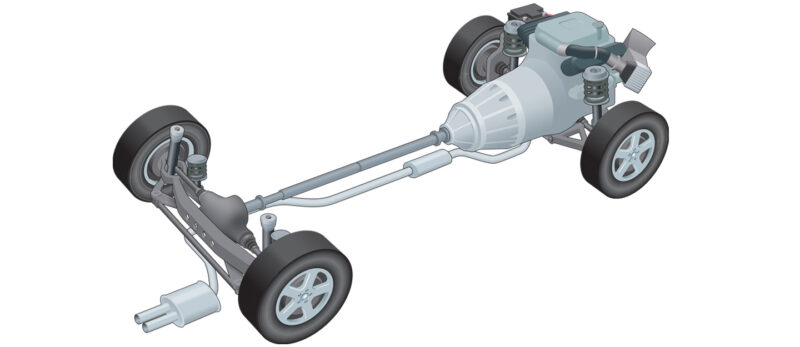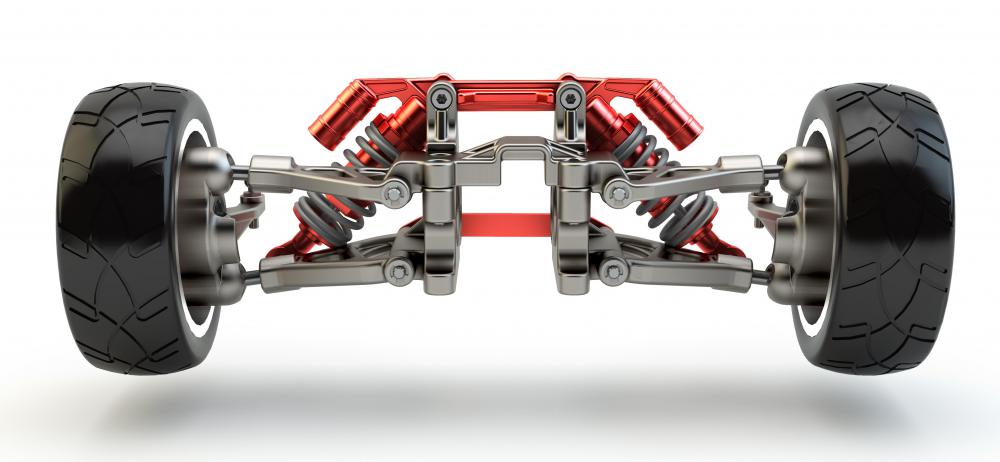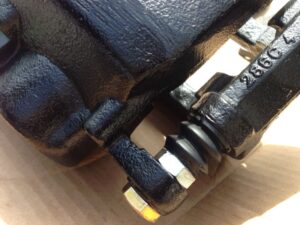
What Are Car Axles
Axles are a critical part of a car, but one that many of us overlook. An axle is a rod or axle that connects a pair of wheels, pushing the wheels and maintaining their position relative to each other. In a car, the engine applies force to the axles, which turn the wheels and move the vehicle forward. Axles are an essential part of any vehicle and there are three main types: front, rear, and short axles. Let’s break down the types of axles and see how to choose the right axle ratio for your vehicle.
What Is A Car Axle?
If you’re wondering what an axle is, it’s a steel rod that connects to a pair of wheels and uses the torque from the gearbox to move the wheels. Torque is a fancy word for rotational force. The axles of the car act as bridges between the tires, taking power from the gearbox to propel the wheels forward, enabling the car to move. Because cars are designed for movement, axles are the secret superheroes that keep your car moving.
Types of Car Axles
Generally, cars have two basic types of axles. One is called a dead axle, which exists in a car to carry the weight and does not rotate with the wheels. The other is a live axle that connects to and pushes the wheel. A constant velocity joint connects the wheel and the live axle, allowing the axle to transmit power smoothly to the wheel.
In addition to classifying car axles as live or dead, they can also be divided into other categories such as front, rear, or short axles.
Front Axle
As the name suggests, the front axle is located at the front of the car. The role of the front axle is to support the steering and handle the shock from the bumpy surface of the road. The front axle could be alive or dead. As mentioned above, the active front axle does the job of spinning the wheels.
Rear Axle
As you might have guessed, the rear axle is located at the rear of the vehicle. Most rear axles are live, which means they are responsible for transmitting power to the drive wheels. The drive shaft is connected to the engine and turns the rear axle, which turns the wheels.
Stub axle
Short axles in rear-wheel drive cars are connected to both ends of the front axle by kingpins. Depending on the arrangement of the stub shafts and their subcomponents, the stub shafts can be divided into four types:
Elliot: This type is attached to the front axle via a yoke, kingpin, and cotter pin.
Reverse Elliot: This minor axis has the reverse arrangement of the Elliot minor axis.
Lamoine: In the Lamoine stub shaft, an L-shaped mandrel and kingpin are used instead of a yoke.
Lamoine Reverse: It has a reverse arrangement of the Lamoine minor axis.
Why Car Axles Are Important
In addition to transferring engine power to the wheels, the axles also carry the weight of the car as well as passengers and cargo. They can also withstand the impact of rough streets. As a result, axles are usually made of strong materials that are better able to resist wear, fracture, deformation, and compression. The strength and stiffness of an axle are one of the most critical factors in achieving and maintaining high performance in a car. Robust front and rear axles consistently transmit powerful forces from the engine to the road, while giving you superior control no matter what driving conditions you encounter.
How Many Axles Does A Car Have?
If you’re wondering how many axles a car has, it probably depends on your vehicle type. At the very least, cars usually have two axles that work with the front pair of wheels and the rear pair. If the vehicle is larger than a passenger car, it may have more axles.
There is an easy way to determine how many axles a car has, though. Generally, cars and trucks have one axle per pair of wheels. These are called “two-axle” vehicles and include most vehicles you see on the road. “
Factors That Decide The Type Of Axle In A Car
Several factors determine which type of axle a vehicle requires. For example, the technical requirements and the resulting forces play an important role in determining the type of shaft.
Some vehicles have prefabricated axles in a standard format. Other companies customize the axles to meet the needs and specifications of the car. Custom axles are best for cars because they allow for more individual control over the wheels. These axles can fine-tune the speed and torque of the wheels.
How To Know Your Axle Is Broken?

Your car’s axle is a complete car part to keep your car moving. If your axle breaks, it could cause you trouble later. But how do you know your axle is broken?
Some signs that you have a problem with your axle include:
- You are experiencing car vibration
- You hear a dull or clicking sound
- Your car is leaking oil
- Your car won’t move
If you’re dealing with any of these situations, you probably have a bad shaft and want to get it checked out by a professional.
Why Should You Inspect Your Axles?
Regular axle inspections are an important part of car maintenance, as catching faults early can help you avoid costly repairs in the future. Axle repair costs can increase significantly if any axles have to be replaced.
What To Look For When Inspecting
Most auto mechanics will inspect your axles while you drive, but you can also do it yourself. You don’t need any tools to do this, but you need to get under the car.
Depending on how low your car is, you may need something to lift it off the ground. You can do this with a car jack or a vehicle ramp.
- Visual inspection
The easiest part of checking is to double-check the boot, which is responsible for keeping the joint lubricated and preventing dirt and water from getting in. They explained that there are ribs in the trunk to bend and move with the vehicle.
Check for holes, splits, or grease leaks. Next, you should check the shaft for any nicks, dings, or dents, and any signs of anything rubbing on it.
You will also want to check the clamps that connect the jacket to the shaft to make sure there are no leaks.
- Driving inspection
You can also take a test drive to determine if there are any issues with your axle. Your axle may be in disrepair if you notice any of the following signs:
- There is a loud “cluck” sound when you put the car in gear.
- Your car vibrates when you drive.
- There is a clicking or popping sound when you turn.
- Your car is moving, but not moving forward or backward.
How To Choose The Right Axle Ratio For Your Pickup Truck
In addition to unique torque, engine, and transmission specifications, many trucks feature custom axle ratios. A shaft speed like 3.55:1 means that the drive shaft will turn 3.55 times for each wheel turn.
In most cases, the standard final drive ratio is suitable for most drivers who do not need a heavy load. However, if you are towing a heavy trailer or want to tow a large load, you may want the highest possible final drive ratio.
The Bottom Line
Your axles allow your car to keep going. It’s important to be aware of signs of damaged axles and make any necessary repairs to keep you safe and keep your car in good shape. You also need to consider your car insurance as part of overall car maintenance.


Average Rating